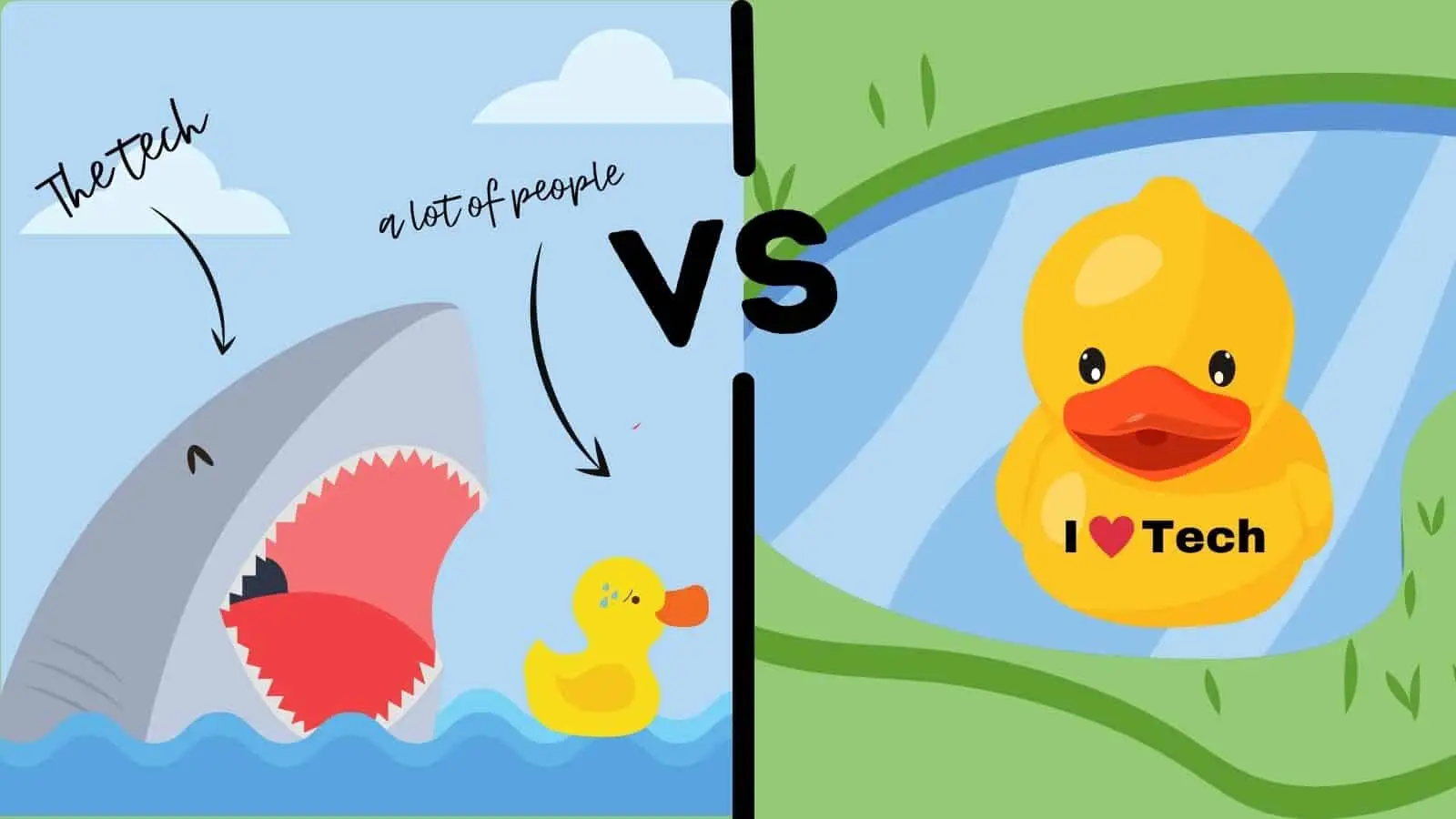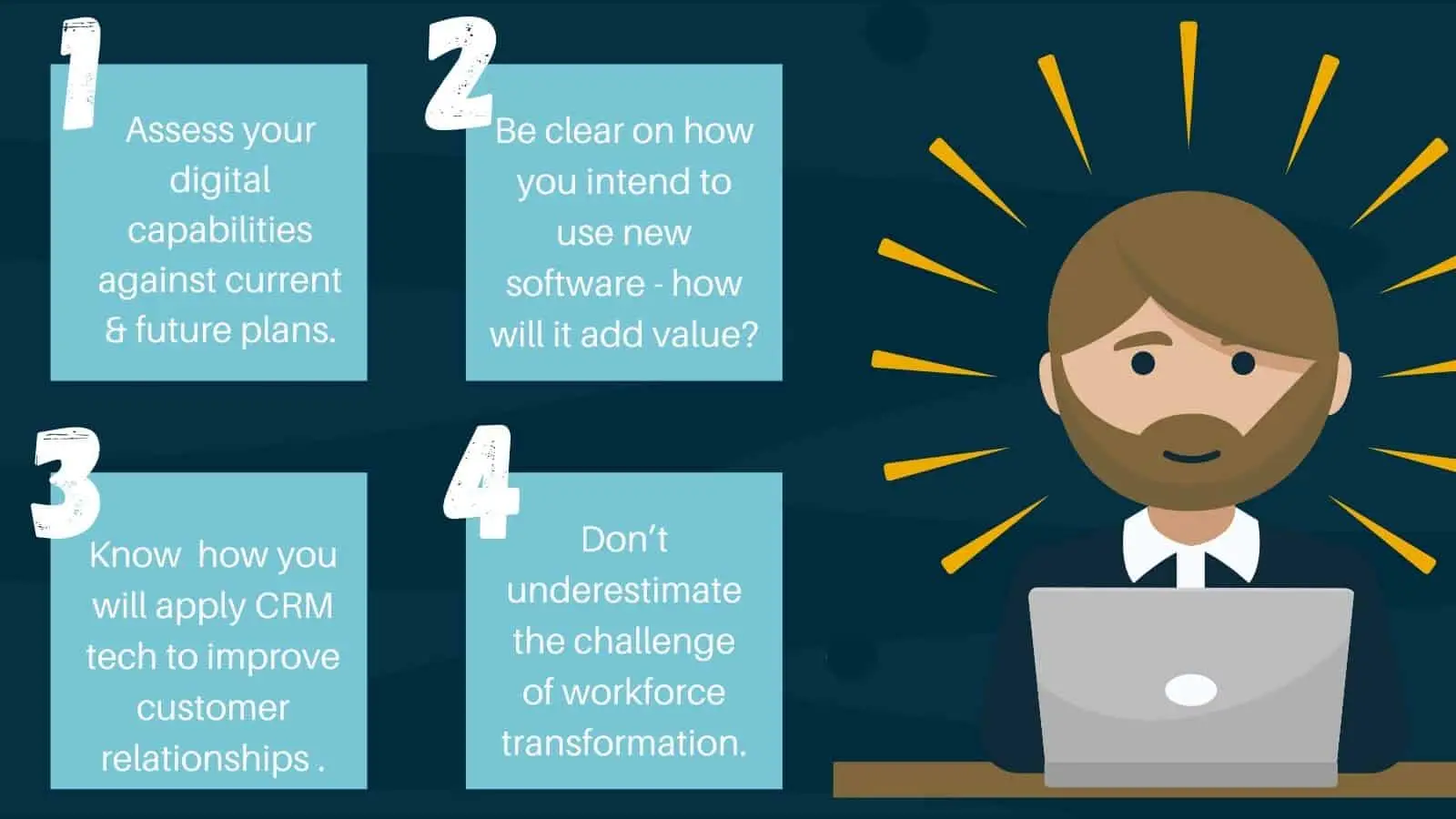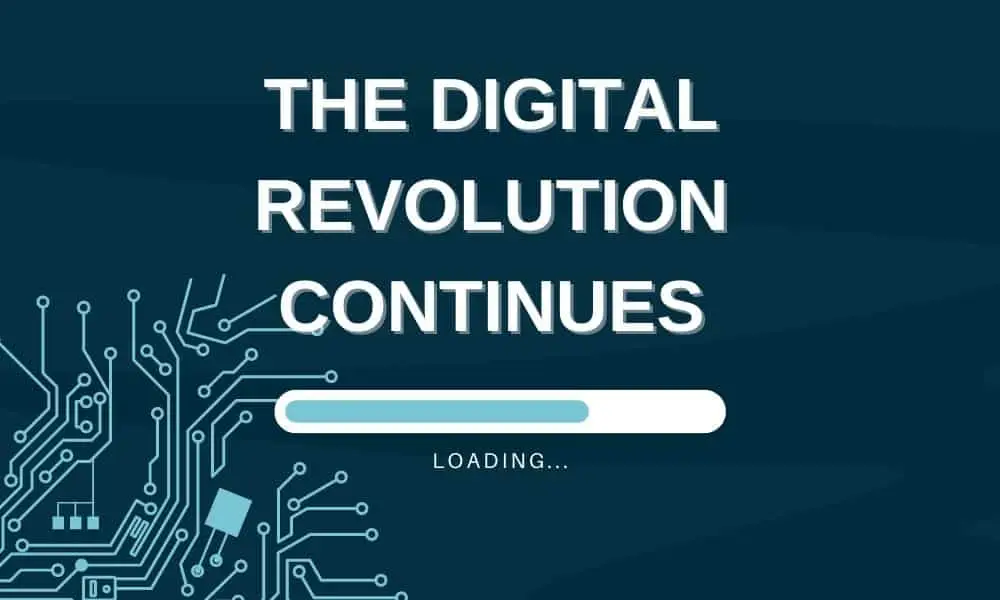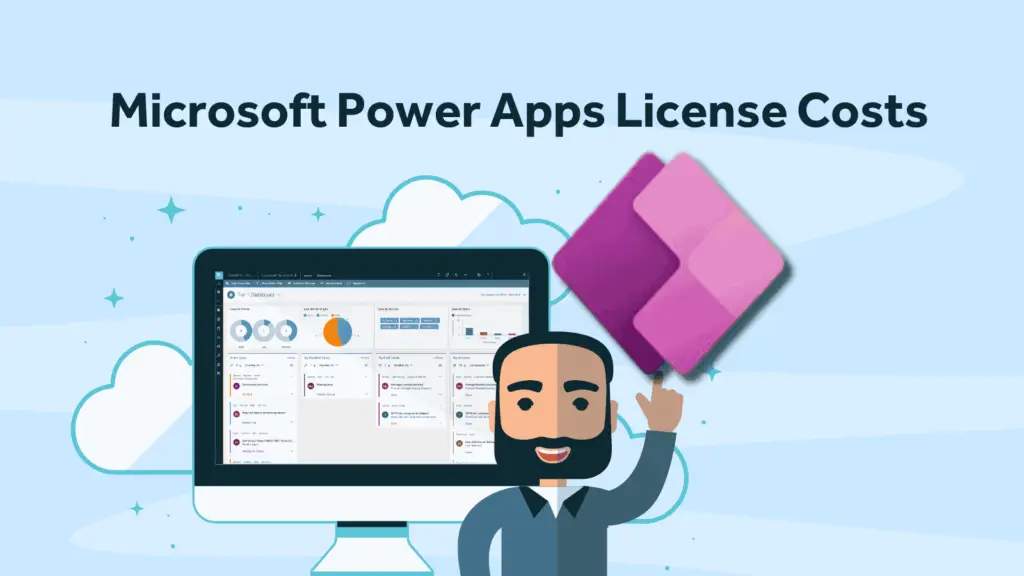The digital transformation story is here to stay
It’s approaching four years since we packed up our office belongings and headed to the safety of our homes. Life pre-pandemic seems like a long time ago, but we can say with some level of confidence that we’ve adapted and settled into a new way of living, shopping and socialising pretty well. Adjustments in the business world, on the other hand, are far from over.
These unprecedented times jump-started the business world into a new hyper-digitised chapter. It was pretty brutal for some, as regardless of our tech skills, we were catapulted into a world of video calls, shared digital workspaces and cloud-stored documentation. Some businesses adjusted like a duck to water smoothly does it. No fear at all. Whilst others were pulled into the new tech waters splashing and screaming as if swimming from the jaws of a Great White.

Every business is on its own very personal digital journey and we’re here to explain why it’s not too late to join the party and what to do to ramp things up.
What does it mean to be truly digitised?
Though the digital transformation journey is unique to each business, digitisation involves embracing and adopting new digital technologies across the organisation to streamline, automate and unify processes, data, customer information and workflows. There is no universal description rather, a loose agreement of what it can entail, and this is in part due to the diverse nature of the digital technologies for business use.
As you’ll see, the global digitisation process has had a far greater reaching impact across businesses than simply adjusting to working from home, as home or hybrid-working is just one element. Out of necessity, they may have adapted to using video conferencing and virtual workspaces, maybe using Teams, Skype for Business Google Meet and the likes, but they haven’t truly become digitised.
Truly digitised businesses have adapted to the way that their customers are willing and able to interact with their business. The speed at which this adaption is happening varies from industry to industry, with cultural aspects playing a huge part.
Whilst early adopters are basking in digital delight, with their feet up on their hefty tech stack, others have some way to go on their digital journey. “We’ve just about got to grips with Teams!” I hear you cry.
Rome wasn’t built in a day…
As with all major cultural shifts, it takes time. In a world of 7.9 billion people, 213 million businesses and 3.2 billion employees, the global shift was never going to happen overnight. We are most definitely still amidst a global transformation. So, there’s no need to feel like you’ve missed the party, it’s still only 9 pm and everyone’s just getting warmed up, to be frank.
It is suggested by statistica.com that in 2022, spending on digital transformation (DX) is projected to reach 1.8 trillion U.S. dollars. By 2025, global digital transformation spending is forecast to reach 2.8 trillion U.S. dollars.
If you feel you are behind the curve here is what you can do to push forward with your digital transformation in 2022.

Where to start with your digital transformation
So, firstly, if you are daunted by the prospect of embarking on a digital transformation project, cut yourself some slack. The broad spectrum of technology and the sheer volume of vendors can leave business owners and leaders scratching heads. You’re not alone.
It’s no surprise that new digital transformation specific roles are emerging, and the skills of IT and digital specialists are in serious demand. It’s a big ol’ subject matter and also a rapidly evolving one at that. One of the best things a business can do is to realise their own digital skills gap and lack of knowledge on this matter and call in an expert. Four in ten companies hired IT or other tech staff during the COVID-19 pandemic, and two-thirds expect to hire more IT or tech roles in 2021. (CompTIA)
And the best starting point is understanding where you are now; ask yourself these questions:
What technology do you currently use and what’s the proficiency level across the organisation? You may say you use Teams, but are you using it to its full potential? As Teams comes with a fantastic selection of additional tools offering digital collaboration and real-time virtual working space. Video calls are just one aspect.
Then ask, how well is this tech stack serving you? Is it the right solution and how does this suit your plans? If you have growth plans afoot, then it is highly probable that those plans will be far more successful and happen at a faster pace with the aid of the right technology.
Think about how your existing processes are facilitated by tech, or how they could be improved. Do you have the right IT infrastructure in place to support your growth plans? How much of your business administration is digitised? And how can you connect your physical outputs to digital records? Where is the accountability and where is the recording of activities? This is where the idea of unified data sources organisation-wide plays a part. A company that stores, manages and leverages its data efficiently, has far more insight and control as it can gain the bigger picture, benefits from granular customer insights and reduces operating silos, thus gaining agility and competitive advantage.
How can tech transform your business?
Similarly, how can technology transform your operations or manufacturing processes through automation, AI or industry-specific technology?
Thinking more outwardly, consider how technology could improve your customer experience. How can you use it to add value across the customer journey experience? For example, look at how chatbots have revolutionised the point of contact online. No longer does the customer have to send a message and then wait 24 hours for a response. Their enquiry is dealt with instantly and accurately. Delightful!
This faster pace and higher expectations from customers mean those businesses that don’t offer this level of service are leaving themselves at a significant disadvantage. If the customer contacts three businesses about a product and only one replies instantly, guess who’s winning the business? This global shift in the use of tech for customer service is an ongoing trend. As the global average share of customer interactions that are digital have almost tripled from June 2017 to July 2020, from just 20 per cent to almost 60 per cent. (Statistica.com)
Harnessing tech to transform customer satisfaction
What’s more, the digitisation of customer interactions can then be leveraged to help you anticipate and meet customer expectations, sell smarter, personalise customer communications, communicate and solve customer issues in real-time. All of which will continue to raise customer service levels. Satisfied customers are loyal customers and it’s widely known that it costs three times more to acquire new customers than it does to win more business from existing customers. Focusing on the customer, just makes business sense. Then consider the benefit of brand value and word of mouth. Businesses that aren’t able to meet or exceed changing customer expectations as a result of not keeping up with technological developments will fall by the wayside.
Workforce transformation in the digital revolution
So, if you’re at the point where you know that greater tech adoption would elevate your business and accelerate growth, you need to then think carefully about the part that people play in this change – this is known as your workforce transformation. And we won’t sugar coat this point. Digitisation involves a sizeable cultural shift. It is not just changing the way of doing things and digitising processes but encouraging your people to embrace this change instead of resisting it. This is where you need to work hard to get the buy-in. Remember the duck and the shark? We want more ducks, not shark fearing swimmers.
And the key to success in tech adoption is partly dependent on how well new technology is introduced and sold to the employees. So that they can see the value it brings, not just to the company but to their everyday lives. Show them how it can simplify things and make their lives easier. Show them how it can save time and help them be a more effective member of the team. Help them shine!
So, this is when selecting the right technology and implementing it successfully becomes critically important. Tech doesn’t need to be painful or complex. The right technology will facilitate cultural change, not hinder it. The best suppliers are adept at making tech simple and easy to use, making your workforce embrace it with open arms. Empower your people to work more effectively and efficiently and they’ll run with it. You’ll soon have an army of tech-loving ducks.

The role of CRM in digital transformation
A key technology solution that businesses often look to improve as part of their digitisation journey is CRM, as it is such a critical component of any company’s IT infrastructure and often viewed as the linchpin of commercial success. We’ve already touched on the digitisation of the customer relationship through chatbots and social platforms, but this also goes hand in hand with CRM. As modern, powerful CRMs integrate with critical digital communication tools such as social platforms, websites and customer portals. This seamless data integration is the key to powerful customer insights and smart customer-journey focused marketing which applies the latest marketing automation techniques, value-adding and customer-tailored content. The best cloud-CRMs facilitate that piece of digital transformation effortlessly. Low code / no-code solutions are also a highly sought solution due to their quick deployment and flexible nature, enabling easy adaption to changing business requirements. We offer some good advice on selecting the right CRM in this article.
If a company is used to using spreadsheets, or a very basic or dated CRM, then they are likely to be blind to how modern CRM could transform the way they manage their sales and marketing.
For some companies, the benefits of cloud-based sales and marketing CRMs simply aren’t realised as they hold the belief that sophisticated tech is just for bigger companies with deep pockets. But that view is a fallacy. Never has it been as easy to apply smart CRM to your SMB or start-up, as the market is awash with integrated solutions. The challenge lies in knowing what you need from a CRM system rather than, “Can I afford it?” and “Do I have the skills to apply it?”
Facing the challenge of workforce transformation
The major CRM challenge that many businesses face is the cultural shift that comes with adopting new technology. Especially when it involves adapting processes and ingrained ways of performing everyday tasks. So, it is easy to see why some business owners and leaders will put off tackling sizeable digital projects like digitising the customer relationship. Worse still, some may have attempted to implement a new cloud-based CRM system only to find that it is not fit for purpose. This is a disastrous scenario, limiting their growth potential and frustrating their workforce, who will view this as unnecessary change and pain for marginal gain.
This is why any digital project must be handled and managed with diligence and with a clear view of what the objectives are for the business, customers and the workforce.
Tips on successful digital transformation
If you’re a manager, leader or owner of a business who feels the pressure to move forward with your transformation plans, then we hope you take away these key points, on achieving successful digital transformation:
- Assess where you are in your digital capabilities – consider your existing tech stack and your future business plans.
- Be clear on how you intend to use new software to operate more efficiently and effectively.
- Be confident in how you will apply CRM technology to improve customer relationships and sales and marketing operations.
- Don’t underestimate the challenge of workforce transformation and getting that all important employee buy-in.

To summarise, although we can all agree that the use of virtual workspaces, video conferencing, ERPs and project management tools have helped transform the modern workplace, CRM should be viewed as a primary component of any digital transformation strategy. If you are currently looking at how CRM software could support your digital transformation plans, speak to Rocket CRM, we are a Microsoft Dynamics 365 partner.
Curious to see what’s possible with Microsoft Dynamics 365 CRM or Click? Or simply want some general CRM advice. Contact us.
ABOUT ROCKET CRM
Rocket CRM is a Microsoft Dynamics 365, and a platinum Click accredited partner, helping small to medium-sized businesses and charities harness the power of scalable CRM technology. Our mission is to make powerful CRM software simple with custom-built, user-focused solutions.
Website: rocketcrm.co.uk
Podcast: RocketPod
Social: LinkedIn




